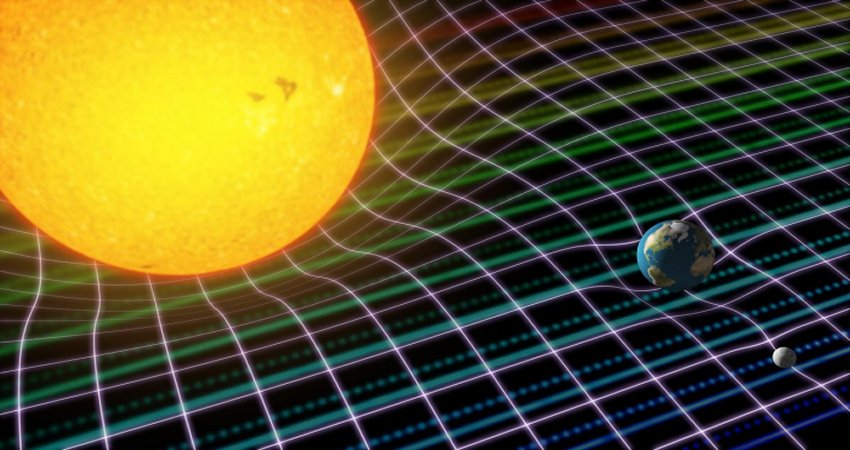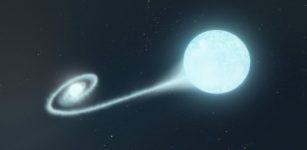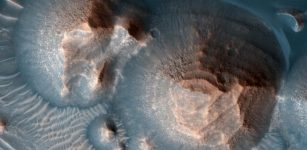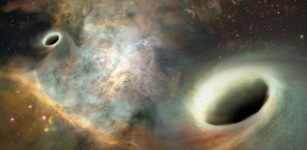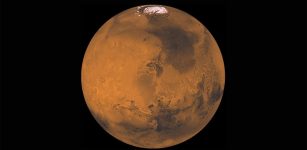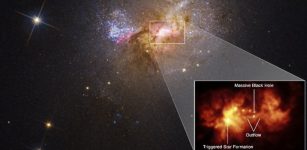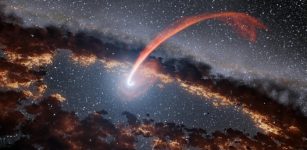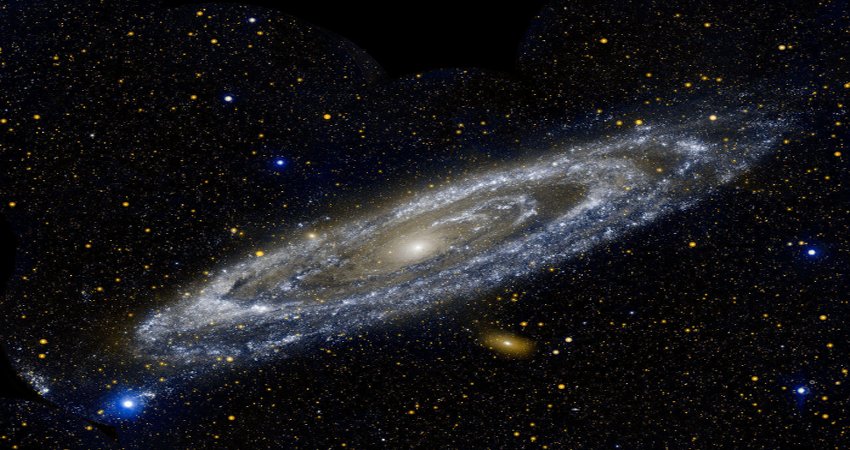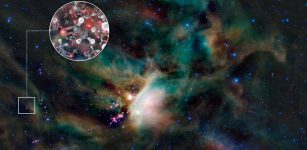New Method To Find Missing Galactic Matter
Eddie Gonzales Jr. – MessageToEagle.com – Astronomers have for the first time developed a method to help track down the missing matter.
For decades, scientists have been puzzled as to why they couldn’t account for all the matter in the universe as predicted by theory. While most of the universe’s mass is thought to be mysterious dark matter and dark energy, 5 percent is ‘normal matter’ that makes up stars, planets, asteroids, peanut butter and butterflies.
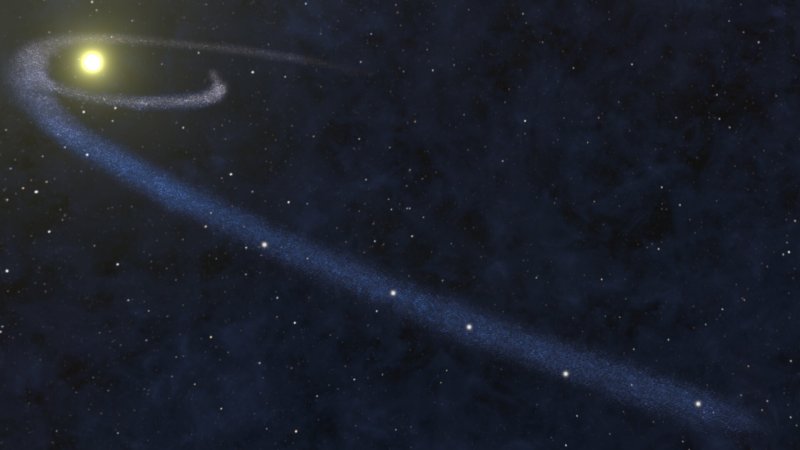 Artist’s impression of a gas cloud from tidal disruption. Credit: University of Sydney
Artist’s impression of a gas cloud from tidal disruption. Credit: University of Sydney
This is known as baryonic matter. However, direct measurement has only accounted for about half the expected baryonic matter.
Yuanming Wang, a doctoral candidate in the School of Physics at the University of Sydney has applied her technique to pinpoint a hitherto undetected stream of cold gas in the Milky Way about 10 light-years from Earth. The cloud is about a trillion kilometers long and 10 billion kilometers wide but only weighing about the mass of our Moon.
“We suspect that much of the ‘missing’ baryonic matter is in the form of cold gas clouds either in galaxies or between galaxies,” said Ms Wang, who is pursuing her PhD at the Sydney Institute for Astronomy.
“This gas is undetectable using conventional methods, as it emits no visible light of its own and is just too cold for detection via radio astronomy. What the astronomers did is look for radio sources in the distant background to see how they ‘shimmered’. “We found five twinkling radio sources on a giant line in the sky. Our analysis shows their light must have passed through the same cold clump of gas,” Ms Wang said.”
Just as visible light is distorted as it passes through our atmosphere to give stars their twinkle, when radio waves pass through matter, it also affects their brightness. It was this ‘scintillation’ that Ms Wang and her colleagues detected.
Dr Artem Tuntsov, a co-author from Manly Astrophysics, said: “We aren’t quite sure what the strange cloud is, but one possibility is that it could be a hydrogen ‘snow cloud’ disrupted by a nearby star to form a long, thin clump of gas.”
Hydrogen freezes at about minus 260 degrees and theorists have proposed that some of the universe’s missing baryonic matter could be locked up in these hydrogen ‘snow clouds’. They are almost impossible to detect directly.
“However, we have now developed a method to identify such clumps of ‘invisible’ cold gas using background galaxies as pins,” Ms Wang said.
Ms Wang’s supervisor, Professor Tara Murphy, said: “This is a brilliant result for a young astronomer. We hope the methods trailblazed by Yuanming will allow us to detect more missing matter.”
The data to find the gas cloud was taken using the CSIRO’s Australian Square Kilometre Array Pathfinder (ASKAP) radio telescope in Western Australia.
Dr Keith Bannister, Principal Research Engineer at CSIRO, said: “It is ASKAP’s wide field of view, seeing tens of thousands of galaxies in a single observation that allowed us to measure the shape of the gas cloud.”
Professor Murphy said: “This is the first time that multiple ‘scintillators’ have been detected behind the same cloud of cold gas. In the next few years, we should be able to use similar methods with ASKAP to detect a large number of such gas structures in our galaxy.”
Written by Eddie Gonzales Jr. – MessageToEagle.com Staff


